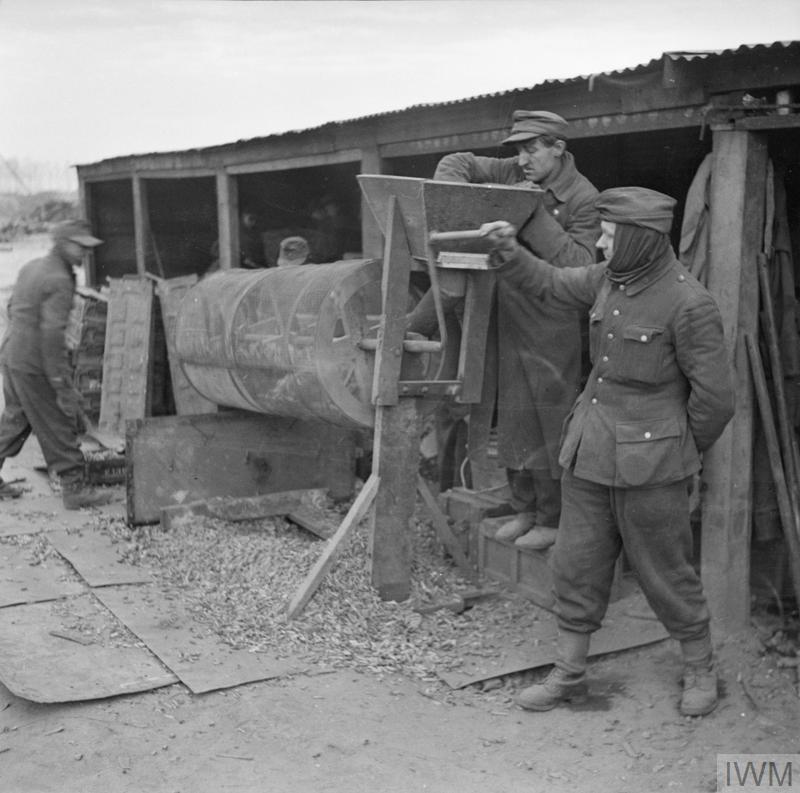Deleted member 1487
What if Mauser has been able to invent the roller delayed blowback system that they had developed during WW2 IOTL before the war and produced a series of widely used small arms based on the concept during the war? How would it influence small arms designs post war?
Here are some examples of firearms that used the system from the 1940-early 1950s IOTL:
https://en.wikipedia.org/wiki/MG_45
https://en.wikipedia.org/wiki/StG_45(M)
https://en.wikipedia.org/wiki/CETME_rifle
Since the Allies were influenced by German small arms designs from WW2 how would even lighter, less expensive, and effective small arms have influenced European (Soviet and NATO) and US designs after WW2? I know the Soviets experimented with the level delayed concept and produced a very interesting version of the AK47, but ultimately decided not to adopted it for some reason:
https://en.wikipedia.org/wiki/TKB-517
The French did of course adopt a whole series of arms around the level delayed blowback system:
https://en.wikipedia.org/wiki/Blowback_(firearms)#Lever-delayed
The US though never seemed to develop any military small arms with a similar idea. They did test the CETME rifle in the late 1940s, but since it was still a relatively unproven and radical concept and of course not an American design they did nothing with it. They did however adopt the M60 based around parts of the FG42 and MG42...if something like the MG45 was instead the Wehrmacht mainstay and the FG42 was effectively the CETME rifle might the US adopt an MG and/or rifle around the same idea? If so would it be better than what they used historically, as the Bundeswehr got good use out of the idea with the G3 and HK21, as have several other militaries who ended up using it in conflicts from the 1960s on. The HK21 even ended up about as light as the legendary PKM, so potentially something like it could have been an effective counter to it in the conflicts the US ran into in rough terrain than the M60 and M240, which have proven too heavy to lug around on foot.
Thoughts?
Here are some examples of firearms that used the system from the 1940-early 1950s IOTL:
https://en.wikipedia.org/wiki/MG_45
https://en.wikipedia.org/wiki/StG_45(M)
https://en.wikipedia.org/wiki/CETME_rifle
Since the Allies were influenced by German small arms designs from WW2 how would even lighter, less expensive, and effective small arms have influenced European (Soviet and NATO) and US designs after WW2? I know the Soviets experimented with the level delayed concept and produced a very interesting version of the AK47, but ultimately decided not to adopted it for some reason:
https://en.wikipedia.org/wiki/TKB-517
The French did of course adopt a whole series of arms around the level delayed blowback system:
https://en.wikipedia.org/wiki/Blowback_(firearms)#Lever-delayed
The US though never seemed to develop any military small arms with a similar idea. They did test the CETME rifle in the late 1940s, but since it was still a relatively unproven and radical concept and of course not an American design they did nothing with it. They did however adopt the M60 based around parts of the FG42 and MG42...if something like the MG45 was instead the Wehrmacht mainstay and the FG42 was effectively the CETME rifle might the US adopt an MG and/or rifle around the same idea? If so would it be better than what they used historically, as the Bundeswehr got good use out of the idea with the G3 and HK21, as have several other militaries who ended up using it in conflicts from the 1960s on. The HK21 even ended up about as light as the legendary PKM, so potentially something like it could have been an effective counter to it in the conflicts the US ran into in rough terrain than the M60 and M240, which have proven too heavy to lug around on foot.
Thoughts?
